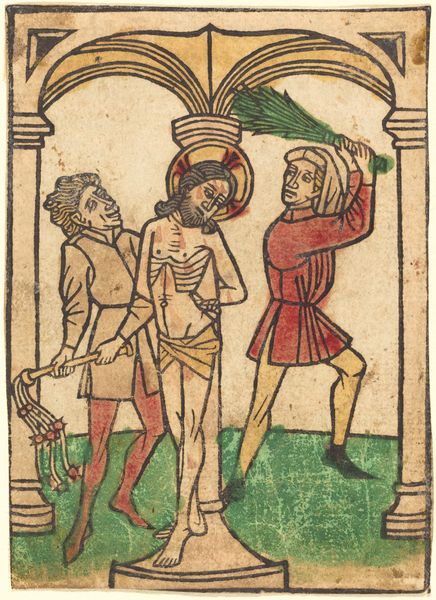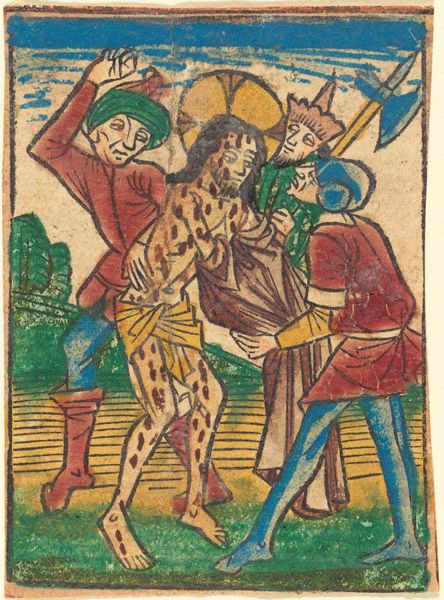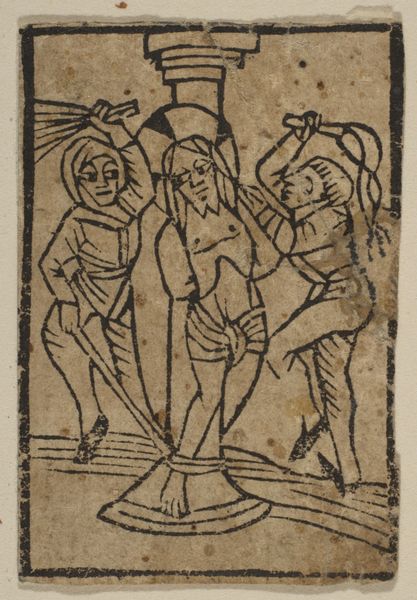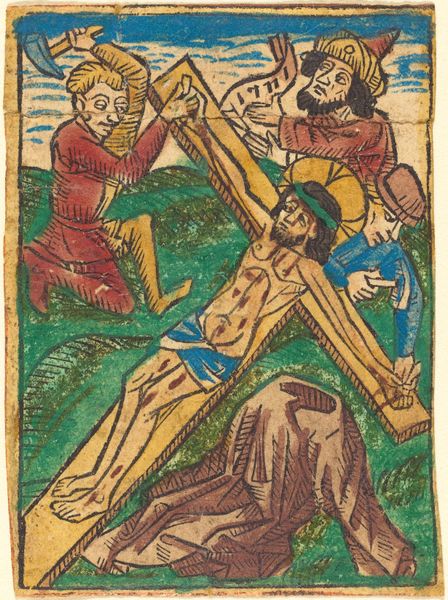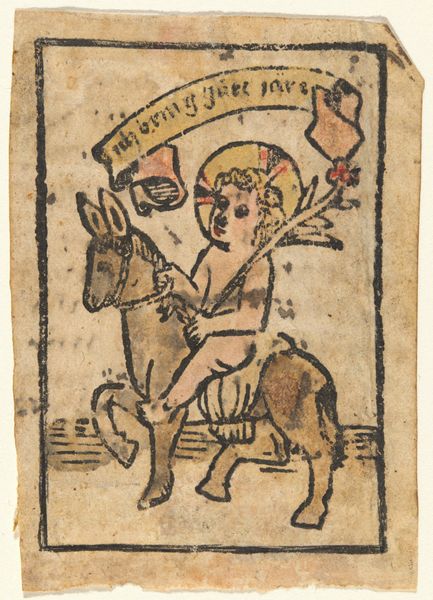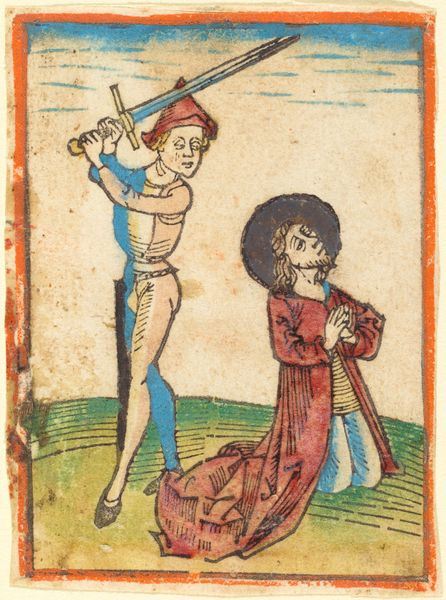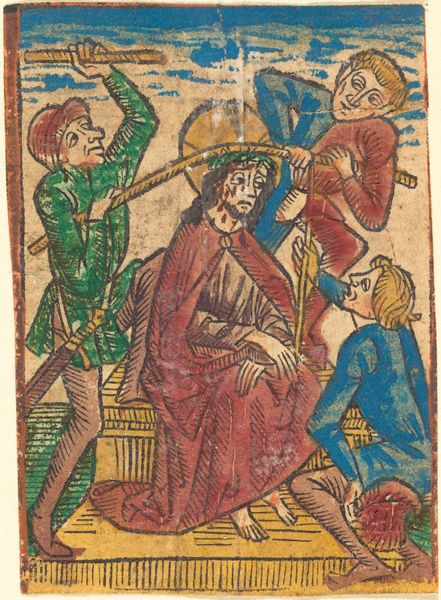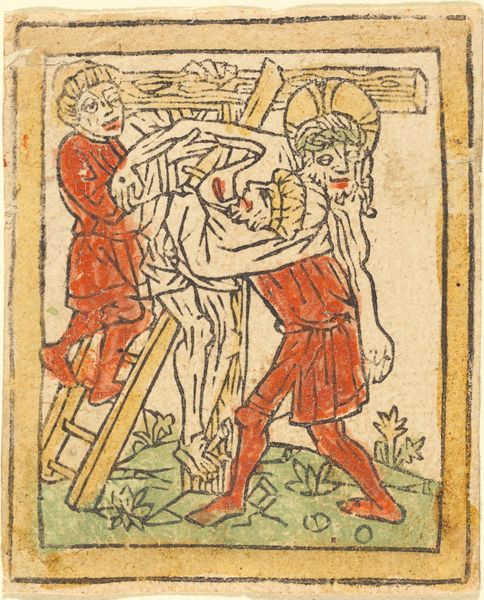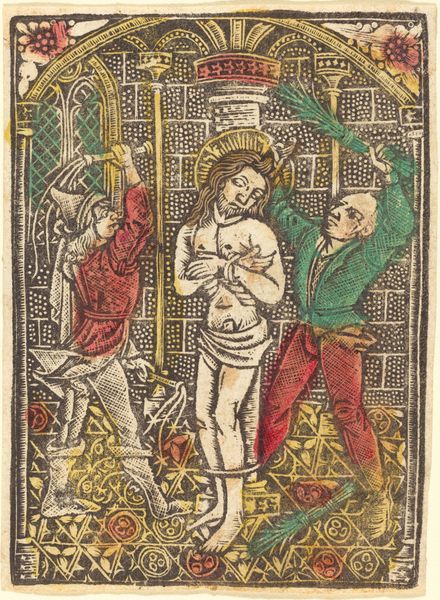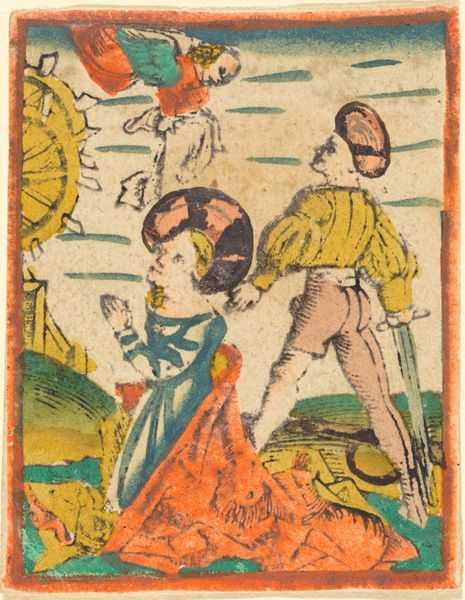
drawing, coloured-pencil, tempera, print, ink
#
drawing
#
coloured-pencil
#
medieval
#
narrative-art
#
tempera
# print
#
figuration
#
ink
#
coloured pencil
#
history-painting
Copyright: National Gallery of Art: CC0 1.0
Editor: This small, almost humble, drawing is called "The Flagellation" and dates back to somewhere between 1425 and 1450. It’s done with tempera, ink and coloured pencil. I’m struck by its simplicity, almost childlike quality in representing such a brutal scene. What can you tell me about its place in art history, or its impact? Curator: It's crucial to consider how and why images like these circulated during the late medieval period. Think of it not just as a religious image, but as a cultural artifact. Its small size suggests personal devotion, maybe within a private household. The rawness of the depiction and the relative inexpensive material would point to art being more accessible. Who was commissioning these, and how were they understood? Editor: Accessible religious art is interesting. Did this make the church uneasy at all? Did they want to control imagery and narratives more? Curator: Absolutely! The Church, while a major patron, also sought to control the narrative. The proliferation of these smaller, less formal images speaks to a democratization of religious imagery, a shift in power, really. What are your thoughts on its relation to power and public opinion? Editor: I suppose the shock factor of Christ’s suffering shown in an accessible art form maybe brought more emotion and thought to the lower classes and made religion more palpable, but I never thought about accessibility like that! Thank you. Curator: Indeed, seeing art as embedded within social structures reveals so much more than just aesthetic choices, wouldn’t you agree? It becomes a mirror reflecting the anxieties, hopes, and power dynamics of a particular time and place.
Comments
No comments
Be the first to comment and join the conversation on the ultimate creative platform.

